Welcome to our comprehensive guide on how to create your very own ping pong paddle using a readily available material—cardboard! Whether you’re looking to engage in a fun DIY project, introduce a unique twist to your ping pong game, or simply have a backup paddle for impromptu matches, this step-by-step tutorial will walk you through the process. Get ready to unleash your creativity and transform ordinary cardboard into a remarkable ping pong paddle that guarantees hours of enjoyment. Let’s dive into this exciting journey of crafting a ping pong paddle out of cardboard while ensuring you achieve optimal performance and a memorable playing experience.
After reading this article, if you decide that making your own ping pong paddle isn’t something for you – don’t worry! We will recommend some suitable paddles for you that you can buy!
Let’s get into the business!
Why cardboard is a great option for making a ping pong paddle?
When it comes to crafting a ping pong paddle, you might wonder why cardboard is an excellent choice of material. Well, let’s explore the advantages of using cardboard for this DIY project.
- Accessibility and Affordability: One of the significant advantages of cardboard is its widespread availability and affordability. You can easily find cardboard in your household or at local stores. It’s a low-cost material that won’t break the bank, making it an ideal option for those on a budget.
- Lightweight and Maneuverable: Cardboard is lightweight, which makes it easy to handle and maneuver during a fast-paced ping pong match. Unlike heavier materials, a cardboard paddle allows for quick wrist movements, enhancing your gameplay and agility on the table.
- Customization Potential: Another great aspect of using cardboard is the endless possibilities for customization. You can easily personalize your ping pong paddle by adding unique designs, colors, or even custom grip patterns. Let your imagination run wild, and create a paddle that reflects your style and personality.
- Environmentally Friendly: Choosing cardboard as your paddle material is an eco-friendly option. Cardboard is recyclable and biodegradable, reducing your environmental impact. By repurposing cardboard into a ping pong paddle, you contribute to a more sustainable lifestyle.
- Beginner-Friendly: If you’re new to the game or looking to introduce ping pong to young players, cardboard paddles are an excellent choice. Their lightweight nature and forgiving surface help beginners develop their hand-eye coordination, control, and technique without feeling overwhelmed.
It’s important to note that while cardboard offers various benefits, it may not provide the same level of performance and durability as professional ping pong paddles. However, it’s a fantastic option for casual games, friendly matches, or simply as a temporary solution.
What are the materials you need to make a ping pong paddle out of cardboard? & Some Key Points to Look at:
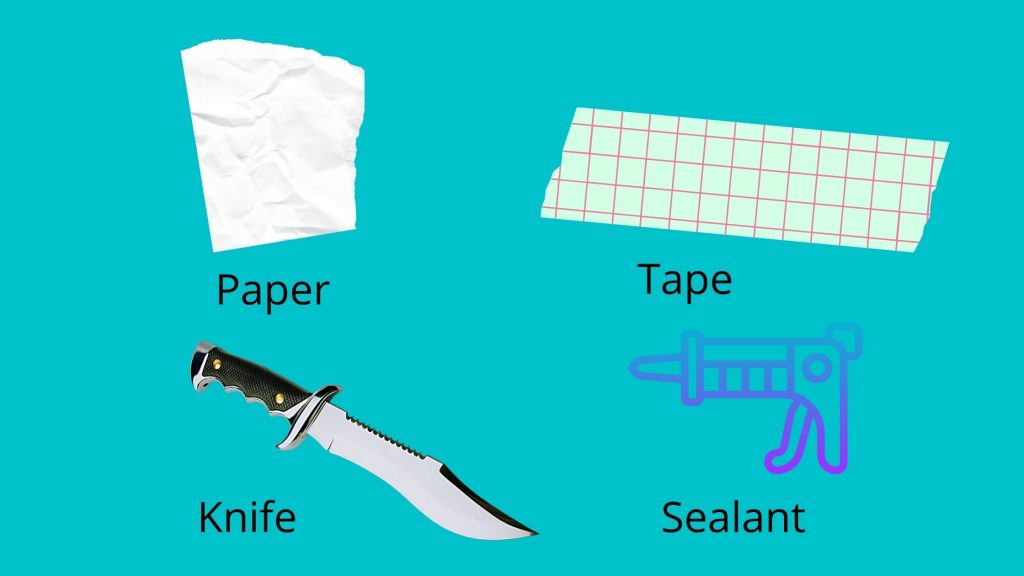
Materials needed:
- Paper
- Tape
- Two rulers or straight edges
- Fine-grit sandpaper
- Gummed paper.
Tools needed:
- Utility knife
- Power sander (optional)
- Paintbrushes for glue
- Sealant (optional).
Key points to look at:
Time required: 30 minutes to an hour depending on skill level.
Skill required: Basic cutting and measuring skills.
Safety concerns: Be careful when using a utility knife and power sanders. If painting, use a well-ventilated area and wear a mask to avoid breathing in fumes.
Before cutting the cardboard you need to know the standard size of the ping pong paddle.
What is the standard size of a ping pong paddle?:
Ping pong paddles come in a few different sizes, but the standard size is about 8 inches wide and 18 inches long. You can make your paddle any size you want as long as it follows these measurements.
Now that you know the standard size of a ping pong paddle, you can cut your cardboard to the correct size.
- Cut a piece of cardboard that is 8 inches wide and 18 inches long.
- Use a ruler to draw a line down the middle of the cardboard, dividing it into two identical pieces.
- Cut along the line you just drew, making two identical pieces of cardboard.
- Tape one piece of cardboard to the other, making sure that the two pieces are aligned.
- Flip the paddle over so the taped side is facing down.
- Cut a piece of foam core or similar material that is 8 inches wide and 18 inches long.
- Tape the foam core to the paddle, making sure that it is positioned in the middle.
- Trim the foam core to match the shape of the paddle.
- Use a sharpie to draw the ping pong paddle’s logo on the foam core.
- Let the adhesive dry completely before using your new paddle!
How to Make a Ping Pong Paddle Out of Cardboard – Step By Step Guide:
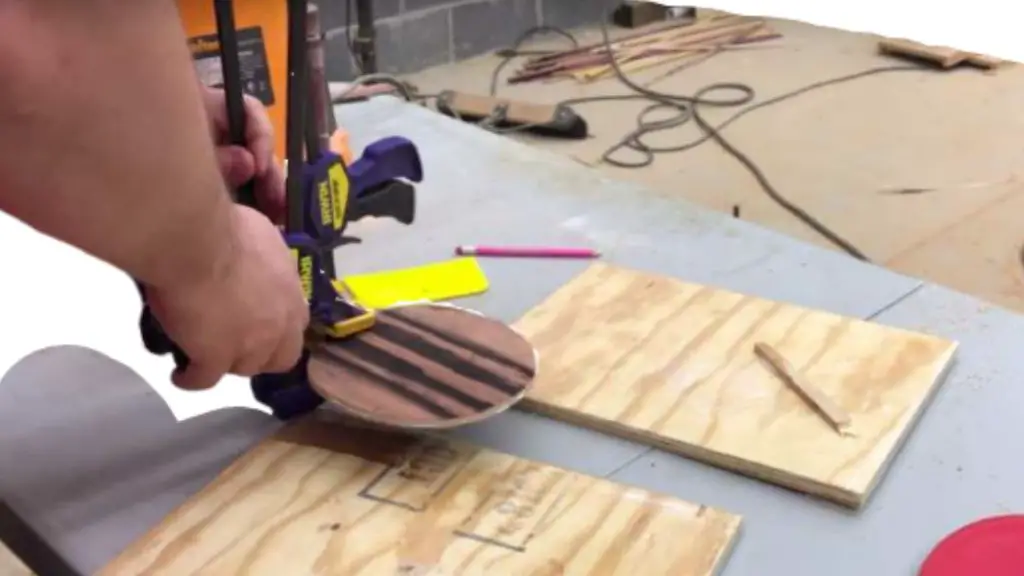
Step 1: Prepare the cardboard template
To make a print template for cutting the cardboard, you will need to measure and cut your paper to be at least 17 inches long and 11 inches wide. Once it’s cut, use the pen or pencil to draw the outline of your paddle on one side of the paper.
Make sure that there is enough room for you to fold up both sides of the paper without overlapping them too much. There should be about an inch leftover on each end when you are done drawing your shape.
Remember that this template will not be used in its entirety; only a small portion of it will actually be used as a pattern for cutting out from cardboard later.
Next, turn over one side of the paper so that all four edges line up with each other. If the paper is smaller than your paddle, you may have to tape two pieces of paper together to create a continuous sheet.
Draw along one edge from corner to corner and then do the same for the opposite end to create a large triangle.
Cut out this triangle by cutting all four corners towards each other until they meet in the dead center of the triangle. Discard the tip and tape up the unfolded ends of your paper to create a continuous sheet.
Next, draw two lines along each edge on both sides of the paper, starting about an inch from one corner and ending at roughly three inches from the other corner.
Continue drawing these lines towards themselves as you move down toward the opposite corner of the triangle, so that your paper forms a downward “V” shape and you can fold up both ends.
Tape along these lines to hold them together in order for your paper to create a map or template when you’re finished.
On the other side of the paper, draw another half-circle (this is the paddle’s handle). The template is now complete.
Step 2: Determine The Size of a Cardboard Paddle
The size of a paddle is determined by the player’s height. The length should be from the ground to your hand when you hold it out in front of you, and the width should be about an inch wider than your grip.
Keep in mind that these dimensions are just guidelines and may vary depending on whether or not you want to play left-handed or right-handed.
If you’re making a paddle for someone else, take their measurements into account as well.
Step 3: Trimming, Sanding, and Gumming
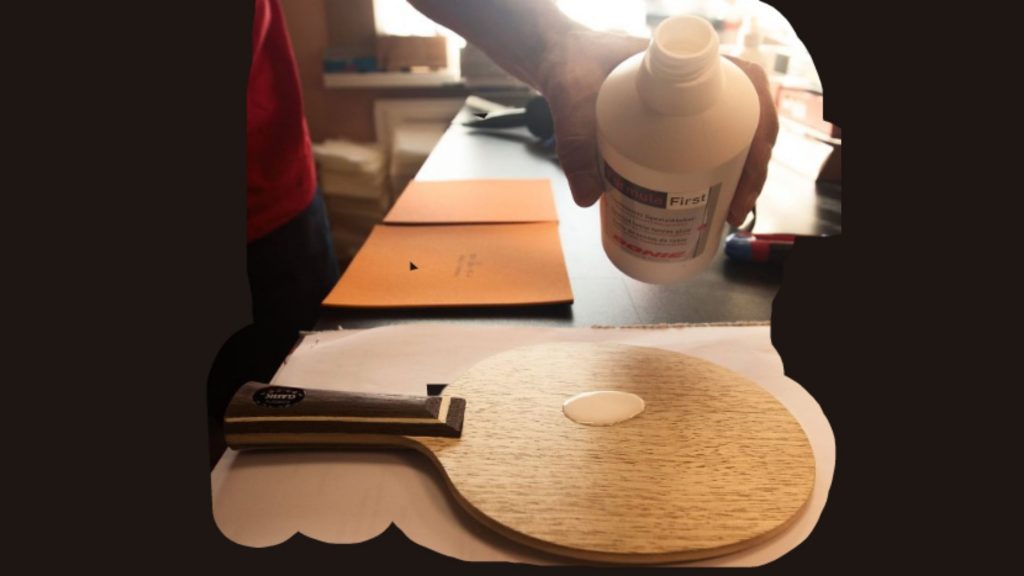
Once you have your cardboard, use a ruler and utility knife to trim the paddle to the desired size. Be careful while cutting as cardboard is a very sharp material.
If you are playing left-handed, make sure to cut the cardboard on the opposite side so that the grip is in the correct orientation for your hand.
After you have trimmed the cardboard, use fine-grit sandpaper to smooth out any rough edges. If you have access to a power sander, this will work even better.
Finally, apply a coat of gummed paper to the front and back of the paddle. This will help keep the cardboard from becoming too slick when it gets wet.
Step 4: Painting and Finishing
The final step is to paint the paddle in any desired color or pattern. You can use spray paint, acrylics, or even markers.
If you’re going to be using your paddle outdoors, make sure to use a weather-resistant sealant on top of the paint. Allow the sealant to dry completely before using the paddle.
You can also read: how to clean a ping pong paddle step by step
Is there a difference between the red and black sides of a ping pong paddle?
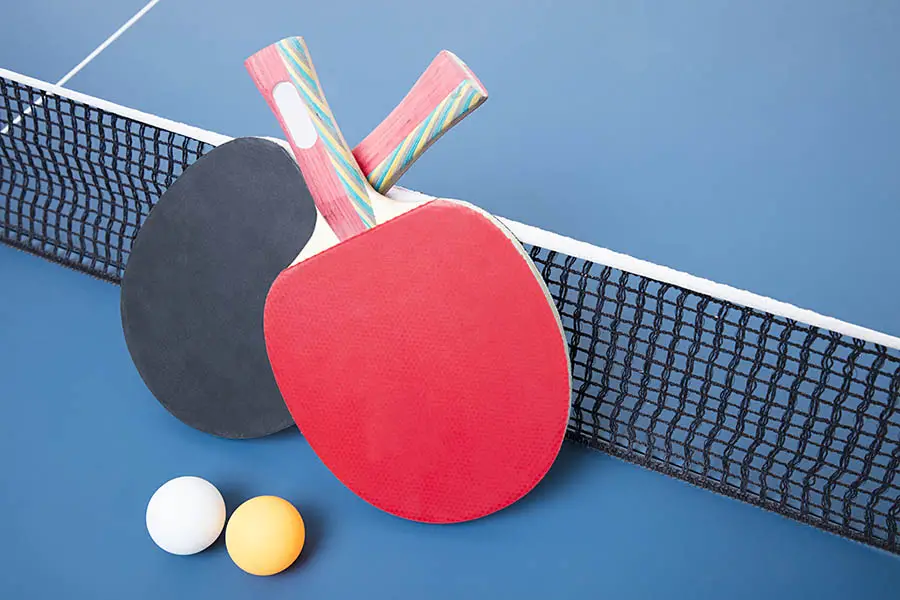
The red side of the ping pong paddle is usually used to return a shot. The black side is used to hit the ball. It may seem like there’s no difference, but there are actually several differences between these two sides of the paddle.
The red side has more weight, which means it will make contact with the ball before the black side does when you use them together in your hand during play.
This can be good for attacking shots, but not so much for defensive shots because at close range an opponent could easily steal that ball off you and then send it back over to you on their next turn – or vice versa!
The shape of both sides also differ in some ways: “the black-side blade has a deep middle ridge, which is shaped like a ball or bell curve.
The red-side blade has an open V shape”. This means that the black side could be better for control because there’s more friction on the paddle to keep it in your hand.
The surface of both sides are also different: “the red side will have grooves that run perpendicular to the racket face. The black side will have no grooves but tiny dimples all over its surface”.
This can affect how the ball moves when it comes into contact with the paddle, and so could be another reason why one side might be better for returning a certain type of shot.
So, there is a difference between the red and black sides of a ping pong paddle.
The difference is that each side has its own purpose, design, weight distribution, friction, surface features, and even the way it feels in your hand!
What are ping pong paddles made out of?
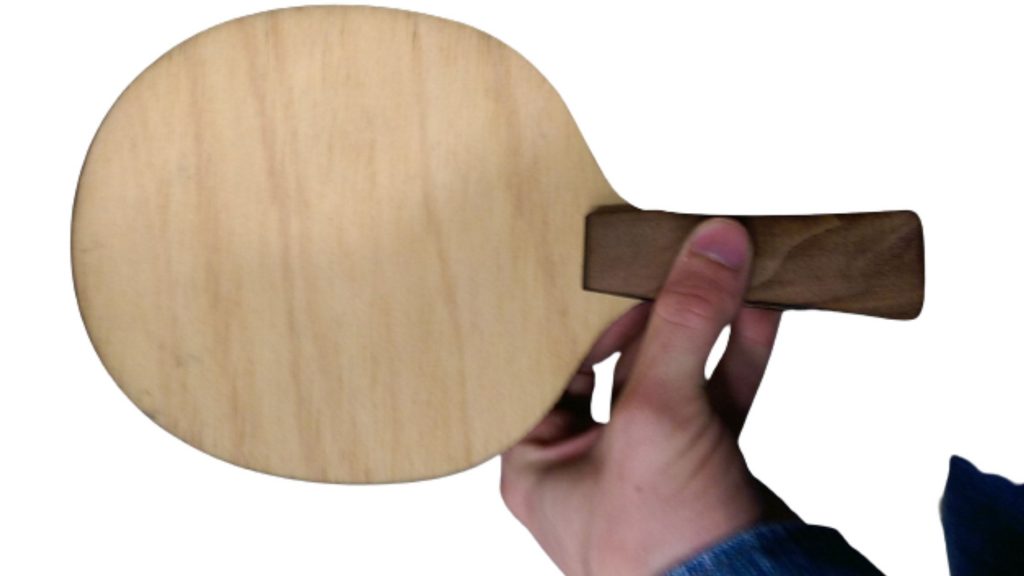
Paddles can be made from wood, graphite (used to make many cheap paddles), polycarbonate, titanium, aluminum alloy, or plastic.
The most common materials are wood and graphite. Graphite paddles are stiffer and provide more power, while wooden paddles are more flexible and provide more control.
What type of wood is used for ping pong paddles?
The primary material used for the paddle is wood. The most common types of wood used are maple or beech, as they have a high elasticity for ping pong.
There are other materials that can also be used to make paddles such as carbon fiber and aluminum, but these usually will have a higher cost to them.
These materials aren’t necessarily better than traditional woods, but their increased hardness does not provide increased elasticity which could result in an increase in errors when hitting a ball if encountered with one of the two aforementioned harder materials.
Why are ping pong paddles so expensive?
Ping-pong paddles are usually made out of wood and it turns out that making them has a very high up-front cost.
Also, the quality of the rubber and glue used in the production process is expensive as well.
Of course, this means that there’s always a danger that cheap materials will be used which would decrease the end product’s quality and longevity.
Conclusion:
In this article, we have shown you how to make a ping pong paddle out of cardboard step by step. This is an inexpensive and fun way for children and adults alike to enjoy the game.
We hope that you enjoyed reading about our step-by-step guide on how to create your own custom ping pong paddle from scratch!
If you think it had helped you then you can share this masterpiece with your loved ones so that they can make a paddle on their own as well.
When you pay a visit to them you can join them playing the game and make fun spending time there.

Hi, My name is Benjamin Fink and I am the author of the ping pong reviewed blog. I am a sports person learning and sharing my knowledge with others about ping pong and other sports.
I have been playing ping pong for the last 17 years and teaching people about the game and writing new things about the game through this blog When finding something new. I have participated in serious ping pong tournaments in my country.
